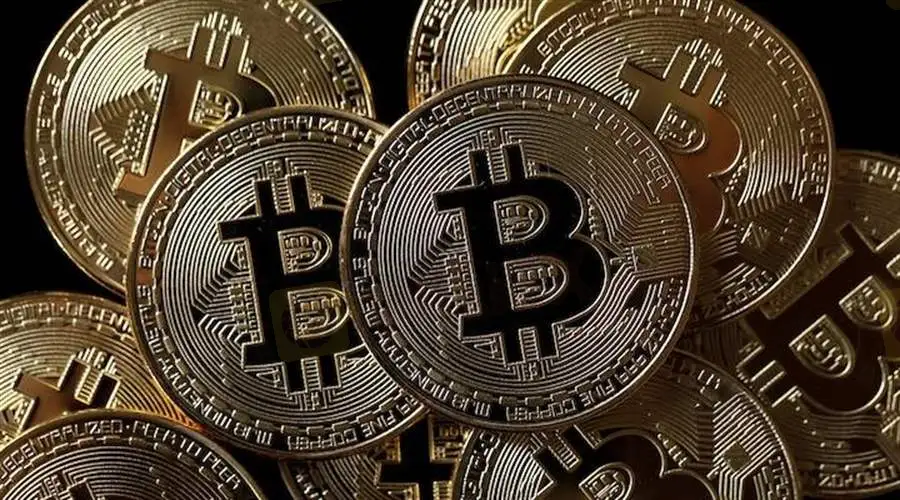简体中文
繁體中文
English
Pусский
日本語
ภาษาไทย
Tiếng Việt
Bahasa Indonesia
Español
हिन्दी
Filippiiniläinen
Français
Deutsch
Português
Türkçe
한국어
العربية
Bitcoin Hashrate Climbs 93% from the Recent Lows
Abstract:The rate dipped by more than 50% in May after Chinas mining ban.

Bitcoin Hashrate Climbs 93% from the Recent Lows
The rate dipped by more than 50% in May after Chinas mining ban.
While Bitcoin is struggling to stay above the $50,000 price level, its fundamentals are presenting a different picture. Hashrate, a leading indicator of the overall health of the Bitcoin network, saw a strong recovery in the past six months.
From the lows of May 2021, the BTC hashrate has recovered by over 93%. The number reached 172 Exahash/s today, in touching distance with the all-time high of 180 Exahash/s. “Bitcoin hashrate has almost completely recovered, sitting only 4% below the ATH (7-day moving average basis). Network hashrate fell by over 50% in May following China's ban on BTC mining. Hashrate has since climbed by 93% from the lows, hitting 172 Exahash/s today,” Glassnode noted.
Earlier this year, China announced a complete ban on crypto mining. Several leading crypto mining companies migrated from the country to other regions including Europe and North America. Due to the largest migration in the mining industry of digital assets, the hashrate of Bitcoin dropped dramatically.
But things are getting back to normal now. With rising hashrate, the overall profitability of leading BTC miners has increased as well.
Bitcoin Exchange Inflows
Since May 2021, Bitcoin supply on leading digital exchanges has declined. Long-term holders of the worlds most dominant crypto asset are now holding BTC in cold digital wallets. “During the capitulation in May, exchanges saw a notable and sustained uptick of BTC inflows, with periods of 10.4k and 13.9k net BTC deposits. This contrasts with the present moment, where recent peak exchange inflows are a fraction of the size, at 2k and 3.2k BTC,” Glassnode mentioned.
“Bitcoin holders aren't behaving as they have in prior moments of weakness, hinting at an underlying confidence, and largely confirming weakness was more heavily influenced by derivative markets rather than spot selling,” the company added in its weekly report.

Disclaimer:
The views in this article only represent the author's personal views, and do not constitute investment advice on this platform. This platform does not guarantee the accuracy, completeness and timeliness of the information in the article, and will not be liable for any loss caused by the use of or reliance on the information in the article.
Read more

Blockchain Decentralization: Empowering a Trustless Future
In recent years, blockchain technology has rapidly evolved from a niche innovation behind Bitcoin into a transformative force across industries. At its core, blockchain decentralization refers to the distribution of authority and decision-making away from a central entity and into the hands of a distributed network of participants. This shift redefines how data is stored and verified and paves the way for trustless, transparent, and resilient systems that challenge traditional centralized models.

The president of @Liberland, @Vít Jedlička come on stage, dialogue on trading security.
The 2025 WikiEXPO Hong Kong Station is about to grandly open. the president of @Liberland, @Vít Jedlička come on stage, dialogue on trading security.

Countdown: 1 day.WikiEXPO2025's first stop, Hong Kong, is about to open.
⏰ Countdown: 1 day. WikiEXPO2025's first stop, Hong Kong, is just tomorrow. Focus on transaction security and explore new investment opportunities. ???? Get ready to start now. See you tomorrow.
JustMarkets Review 2025: Live & Demo Accounts, Withdrawal to Explore
Established in 2012, JustMarkets (Formerly JustForex) is an online forex broker based in Cyprus and serves clients in over 160 countries. Featuring a low entry barrier, a 50% deposit bonus, and robust trading platforms -MT4 and MT5, JustMarkets has gained great popularity among retail investors in recent years. JustMarkets allows traders to trade over 260 CFD-based instruments, which is not an extensive range, yet on leverage up to 3000:1 to increase trading flexibility. To enhance the trading experience, both MT4 and MT5 are provided, along with JustMarkets Trading App, MetaTrader Mobile App, and MetaTrader WebTerminal. JustMarkets offers a 50% deposit bonus to boost traders' confidence. Opening an account is a fully online process, typically completed within one day.
WikiFX Broker
Latest News
TradingView Brings Live Market Charts to Telegram Users with New Mini App
Trump tariffs: How will India navigate a world on the brink of a trade war?
Interactive Brokers Launches Forecast Contracts in Canada for Market Predictions
Authorities Alert: MAS Impersonation Scam Hits Singapore
Stocks fall again as Trump tariff jitters continue
INFINOX Partners with Acelerador Racing for Porsche Cup Brazil 2025
Regulatory Failures Lead to $150,000 Fine for Thurston Springer
April Forex Trends: EUR/USD, GBP/USD, USD/JPY, AUD/USD, USD/CAD Insights
March Oil Production Declines: How Is the Market Reacting?
Georgia Man Charged in Danbury Kidnapping and Crypto Extortion Plot
Currency Calculator







